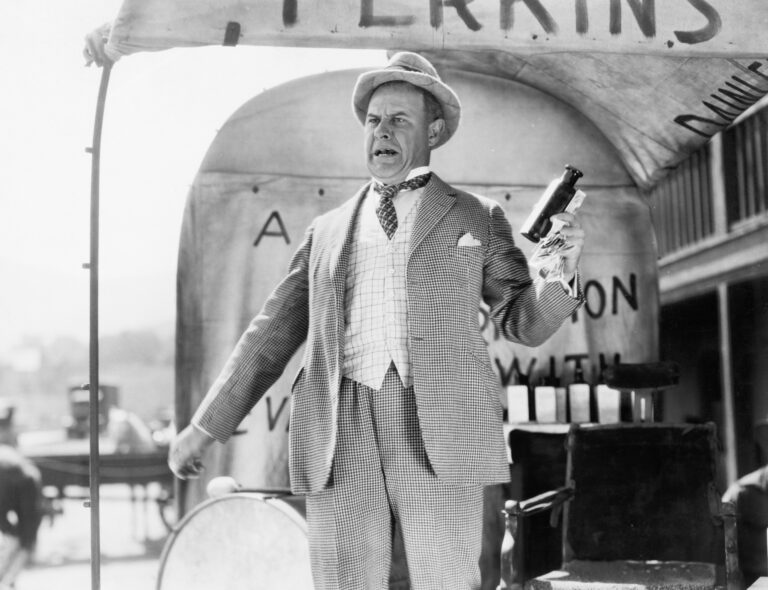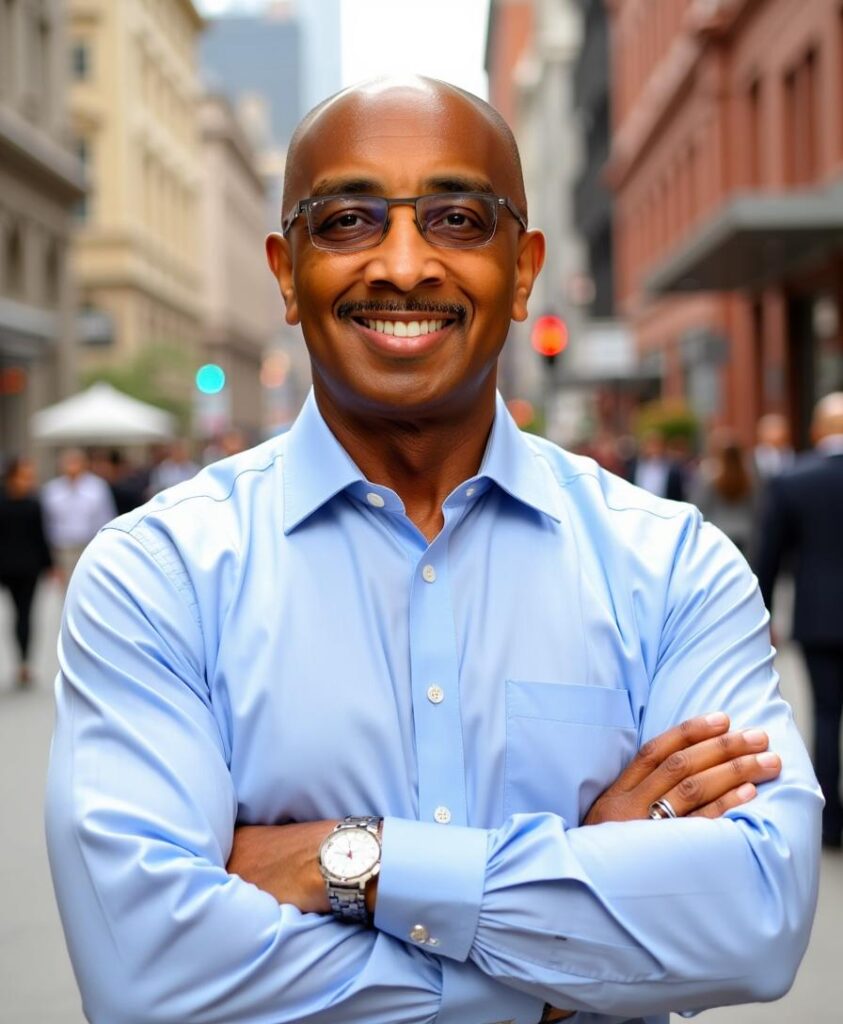
Building a Brand & the Credibility Crisis
How evidence-based coaching restores clarity
By Dr. D Ivan Young, MCC, NBC-HWC
Storm 1: Spam-and-hustle overload
Why “get-rich-fast” noise fries our focus—and how evidence-based coaching puts the brain back in business.
“Building a Brand & the Credibility Crisis”
Imagine, it’s 5 a.m. and your phone lights up like a carnival sign:
“Earn $100 K in 30 days—guaranteed.”
The next ad proclaims – “I cracked the code—DM me.”
And finally the one that’s a threat – “The economy will crash unless you join my urgent mastermind.”
Each headline feels sweet for a second, that’s the dopamine high. Then the crash comes, that’s the cortisol kicking in. Now you’re wide-awake, heart racing, wondering if your plan is already out-of-date.
Even if you’re a seasoned leader, your focus can slip before the first cup of over priced coffee cools. If you’re a first-time founder, your strained cash flow and trampled on nerves amplify the mental wobble.
Don’t underestimate how one viral post can push you to swipe a card, ditch a good roadmap, or sign a deal you’ll regret by lunch.
By breakfast three storms hit at once:
Hustle-spam hype floods every feed.
Unqualified “coaches” wave miracle formulas.
Silent burnout bends your judgment before noon.
Next thing you know, you’re chasing shiny trends you used to ignore. Your brand voice splits in ten directions. Then your team spends hours putting out fires that never had to start.
That’s the real credibility crisis—noise drowning out common sense right when clear thinking is worth its weight in revenue.
Take a breath. Check the facts. Hold your strategy. When you lead with clarity—backed by proven methods, solid ethics, and data-driven coaching—you can turn chaos into steady growth. Your audience won’t remember the overnight gurus, but they will remember the brand that stayed true and delivered.
Evidence-based coaching works like premium noise-canceling headphones. Grounded in neuroscience, it steadies the dopamine-cortisol roller-coaster and reengages the brain’s executive network. Data-driven reflection converts scattered ideas into sequenced milestones, while clear metrics keep progress honest. Guidance from a credentialed coach pressure-tests flashy tactics before they scorch your budget. You replace knee-jerk scroll panic with objective criteria, turning the next swipe into real momentum rather than another credibility catastrophe.
Drowning in pings, meetings, and half-baked advice is real—but it isn’t the end of the story. Research-powered coaching cuts through that static and tunes you to the few signals that genuinely move the needle. We turn those insights into priorities your team can recite in one breath, then layer each action in the order the brain naturally locks in new habits. When that rhythm clicks, strategy steadies, your calendar breathes, meetings shrink to headlines, and progress turns into black-and-white wins. Brand-building stops feeling like burnout in disguise and starts looking like momentum you can feel—proof that you can scale success without trading away your peace of mind.
LinkedIn quietly buries most headline bait, yet the feed keeps swelling with ring-light hustle clips. Meanwhile,Instagram’s Reels engine doubles down on the same quick-hit content, rewarding novelty above nuance. Consequently,each exaggerated “ten-X overnight” promise fires a bright dopamine pop through the reward circuit; however, seconds later your cortisol surges, leaving the body jittery and the mind fogged. In effect, the algorithm becomes a biochemical strobe, flashes everywhere, no sustainable focus. Moreover, the constant oscillation slowly trains us to chase the next spike instead of cultivating the calm concentration real work demands.
When I sense that cycle beginning—either in myself or in a client—I pause and run a simple signal check. First, we breathe and name the emotion a post triggers. Next, we ask, Does this message genuinely resonate with my values and long-term goals? If not, we scroll on—no drama, no judgment. In contrast, if a post does align, we capture the insight and plan one concrete step. Finally, we reinforce clarity with micro-rituals: morning grounding exercises, weekly digital-free blocks, and quick reflection notes that swap dopamine spikes for steadier, deeper rewards. Thus, attention stabilizes, creativity returns, and progress feels less like sprinting on a treadmill and more like walking a trail that actually leads somewhere. Ultimately, sustainable success grows quietly and intentionally—well beyond whatever tweak the algorithm serves up next.
Storm 2: A widening credibility gap
Why Credible Coaching Matters in the Building a Brand & the Credibility Crisis
Right now, 110,000-plus people call themselves coaches, yet only a small slice carry the ICF (International Coaching Federation) badge—the field’s gold standard. That gap is critical because it affects your money, your time, and your brand’s future.
1️⃣ Training You Can Trust
Self-branded “mindset gurus” often complete a weekend course and jump straight to premium fees.
ICF-credentialed coaches log hundreds—sometimes thousands—of supervised hours, learn evidence-based methods, and pass a live skills exam. Result: real technique, not recycled hype.
2️⃣ Ethics That Protect You
Unregulated coaches answer only to their own marketing; if advice backfires, there’s no oversight.
ICF coaches sign a strict Code of Ethics and risk losing their credential for violations. Your data, ideas, and well-being stay safe.
3️⃣ Results That Compound
Quick-fix coaches chase vanity metrics that fade fast.
ICF coaches climb a three-tier ladder—ACC, PCC, MCC— mastering deeper skills at each step: clear goals, systems thinking, and high-stakes leadership. Their impact sticks long after the sessions end.
Spotting the Real Thing (Mobile Checklist)
🔍 Credential: Look for ACC, PCC, or MCC after the name—proof of verified hours and exams.
🎓 Training Path: Check for ACSTH, ACTP, or CCE on their résumé—shows the program itself met ICF standards.
📈 Proof of Practice: Ask for client case studies with hard numbers—demonstrates theory turned into wins.
📚 Ongoing Learning: Confirm recent CCE courses—signals they stay current on neuroscience and ethics.
Anyone can buy ads and call themselves a coach. Very few invest the time, supervision, and accountability it takes to earn—and keep—the ICF badge. Skipping this vetting is making the decision to bet your payroll on charm instead skill. Every hour spent double-checking a résumé for validity steals time from sharpening your market strategy. Instead, pick an MCC coach with ACTP training, plug into proven tools, and keep your energy on scaling—not sifting hype from help.
Storm 3: Burnout — executive and entrepreneurial
“Building a Brand & the Credibility Crisis” meets a second villain: burnout. Recent surveys show nearly 66 percent of employees feel fried, and that lost energy bleeds hundreds of billions out of payrolls every year. Moreover, when stress hangs around, the brain’s smoke alarm—the amygdala—stays locked on “threat,” while the prefrontal cortex (the part that plans and prioritizes) goes dim.
Consequently, a Fortune-500 CMO who once mapped five-year brand architecture can barely think past next week’s launch. Meanwhile, at a seed-stage start-up, focus tightens into tunnel vision: key pivots get missed, teams overspend on the wrong channels, and investors sense panic. As a result, market identity erodes just when rock-steady signals should be loudest.
Yet, this isn’t a doom story; it’s a reality check—and a chance to reset. Evidence-based coaching teaches leaders how to hit the brain’s “reset” button: guided breath loops calm the amygdala, micro-reflections reignite the planning center, andshort feedback cycles rebuild motivation. In turn, brand strategy climbs back from the basement, creative teams feel human again, and messages resonate rather than scatter.
Bottom line? Tackle burnout head-on, and the credibility crisis loses one of its loudest amplifiers.
Capital Windfalls vs. Cash Droughts
Money can be a blessing or a trap—here’s how evidence-based coaching helps you tell the difference.
🌪️ Windfall Hits
1. Foggy Priorities
Hard sell: Vendors wave shiny add-ons, and “elite” advisors court you with hefty fees.
Smart fix: Tie every new dollar to three clear KPIs—cash runway, churn, and NPS—so impulse buys fade fast.
2. Guilt & Isolation
Hard sell: Old friends angle for favors, while influencers pitch $25 K “legacy” masterminds.
Smart fix: Aim a slice of profits at staff training, community grants, or green goals. Shared wins dissolve guilt and build pride.
3. Creative Atrophy
Hard sell: Consultants push copy-paste playbooks, draining originality.
Smart fix: Guard a weekly “idea lab.” No meetings—just fresh thinking that keeps the brand lively.
🏚️ Capital Runs Dry
1. Scarcity Panic
Trap: Predatory lenders dangle quick cash at 40 % APR.
Smart fix: Walk through total payback and hidden clauses with your coach before signing anything.
2. Desperate Pivots
Trap: Gurus promise instant funnels if you rebrand overnight.
Smart fix: Zero in on the smallest profitable customer group and launch one lean, credibility-safe offer.
3. Team Burnout
Trap: Cheap pep talks push toxic positivity while morale tanks.
Smart fix: Set 72-hour micro-goals, celebrate quick wins, and watch energy bounce back.
Bottom Line
Whether cash floods in or dries up, opportunists circle. Evidence-based, MCC-level coaching keeps you steady, so your brand grows on real strategy—not risky shortcuts.
Bottom line: Whether flush with windfall cash or starved for working capital, you’re vulnerable to charmers selling shortcuts. Evidence-based, MCC-level coaching turns that peril into disciplined strategy—so your brand grows on solid ground instead of costly illusions.
Five Simple Shifts to Outsmart the “Building a Brand & the Credibility Crisis”
Flip worry into opportunity
How: Take each fear and list three good things that could come from it.
Why it helps: Your brain stops panicking and starts seeing fresh ideas you can use.
Treat self-care like revenue
How: Block off recovery time before busy weeks hit.
Why it helps: Gallup shows teams work far better when health is protected—your mind stays sharp, profits follow.
Learn in quick bursts
How: Keep training videos and lessons under 10 minutes, then use the tip right away.
Why it helps: Short, action-ready lessons stick, so skills grow without killing your schedule.
Check advice with the E-E-A-T test
How: Ask, “Does this source show real experience, expertise, authority, and trust?” If not, skip it.
Why it helps: You avoid hype, guard your reputation, and keep information quality high.
Share goals, not secrets
How: Post your key numbers (like sales targets) in a small peer group.
Why it helps: Public scoreboards nearly double follow-through, so what you promise lines up with what you do.
Perspective Before Panic
Quick cash can feel electric, yet a surprise windfall without a plan often cranks up stress—especially when your brand is still taking shape. On the flip side, being strapped for cash can drive frantic choices: high-interest loans, cut-rate gurus, or slap-dash pivots that erode trust. Whether you’re flooded with capital or chasing payroll, the nonstop buzz of spam offers and unvetted advice makes every decision feel risky.
Evidence points to a steadier route: measured pacing, regular reflection, and accountable support. That’s where neuroscience-informed, ICF-credentialed coaching shines. It won’t spin followers out of thin air, but it does turn real skills into durable brand equity—guiding you to allocate surplus funds wisely or stretch scarce dollars without panic.
Picture trading the hype hamster wheel for a smart treadmill: clear speed controls, solid handrails, and a shut-off switch when you need it. You still move fast, only now the pace is trackable, adjustable, and far less likely to throw you—whether you’re safeguarding a sudden windfall or crawling through a cash crunch.
Take a breath: you don’t have to go it alone, and you don’t have to panic. Partnering with a well-qualified coach is more than a cost; it’s a strategic investment that turns either extreme—surplus or shortage—into clarity, confidence, and growth that lasts.

Dr. D. Ivan Young, MCC, is an internationally recognized ICF Master Certified Coach, National Board Certified Health and Wellness Coach, and Professional Fellow at the Institute of Coaching, an affiliate of Harvard Medical School.
